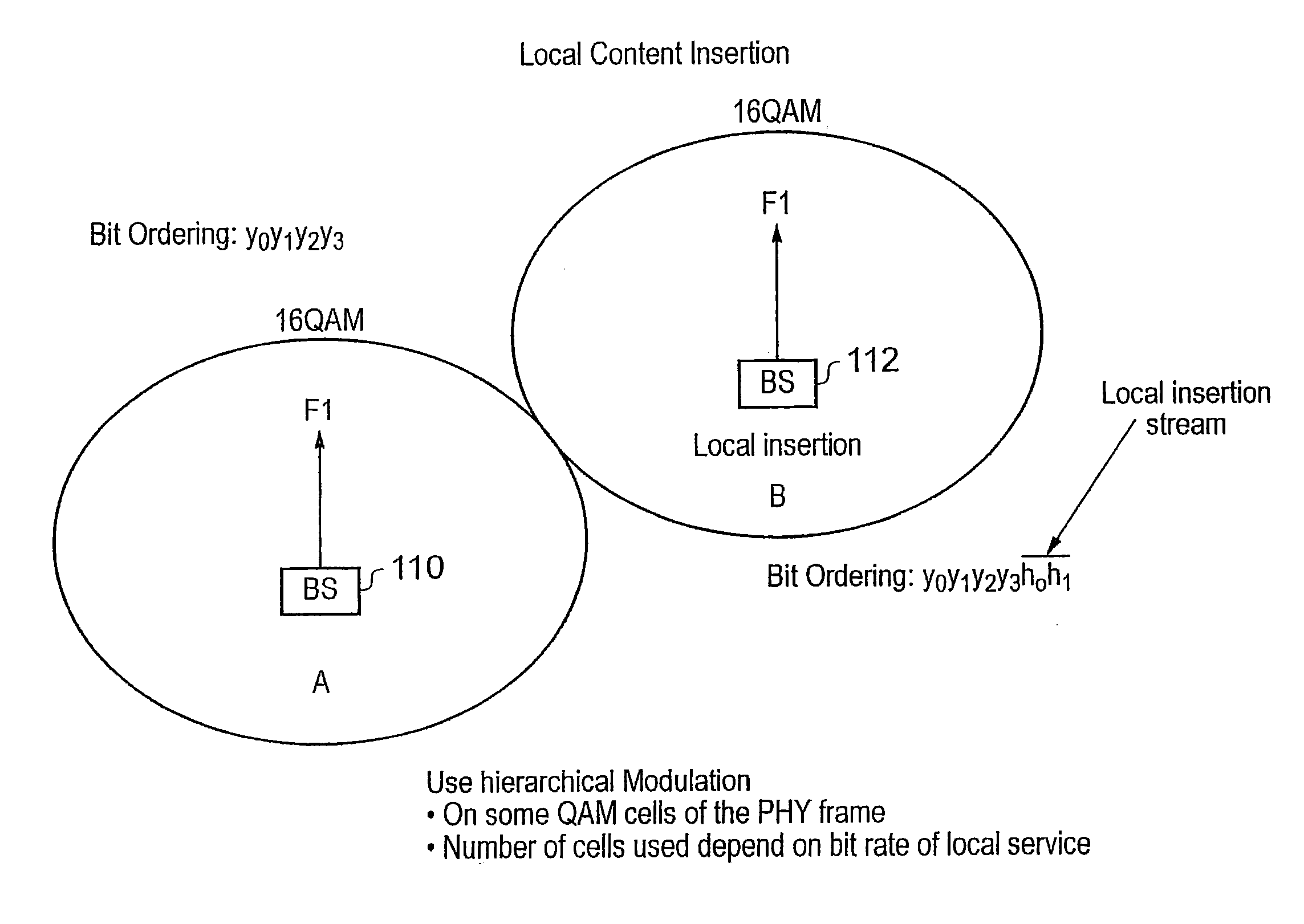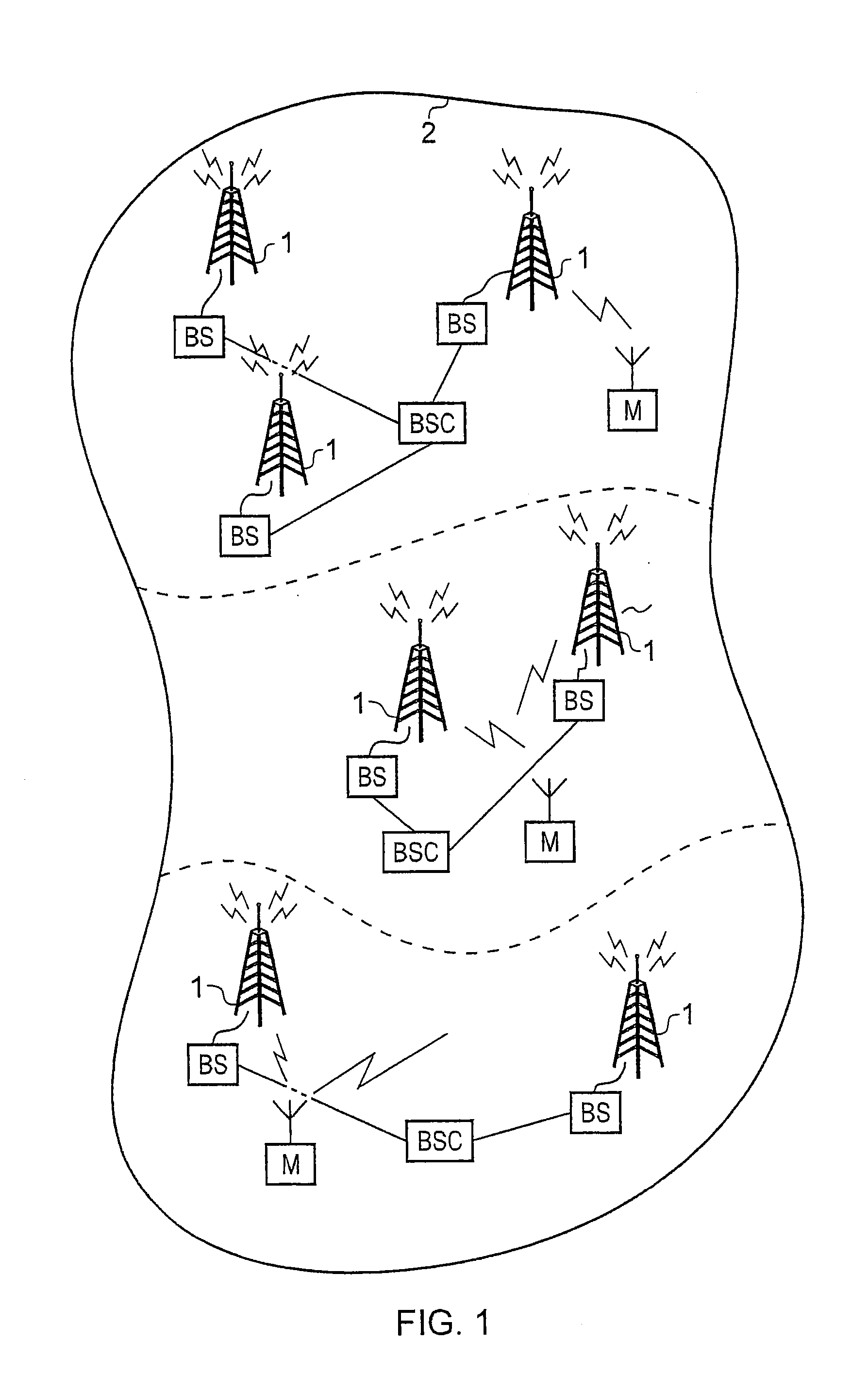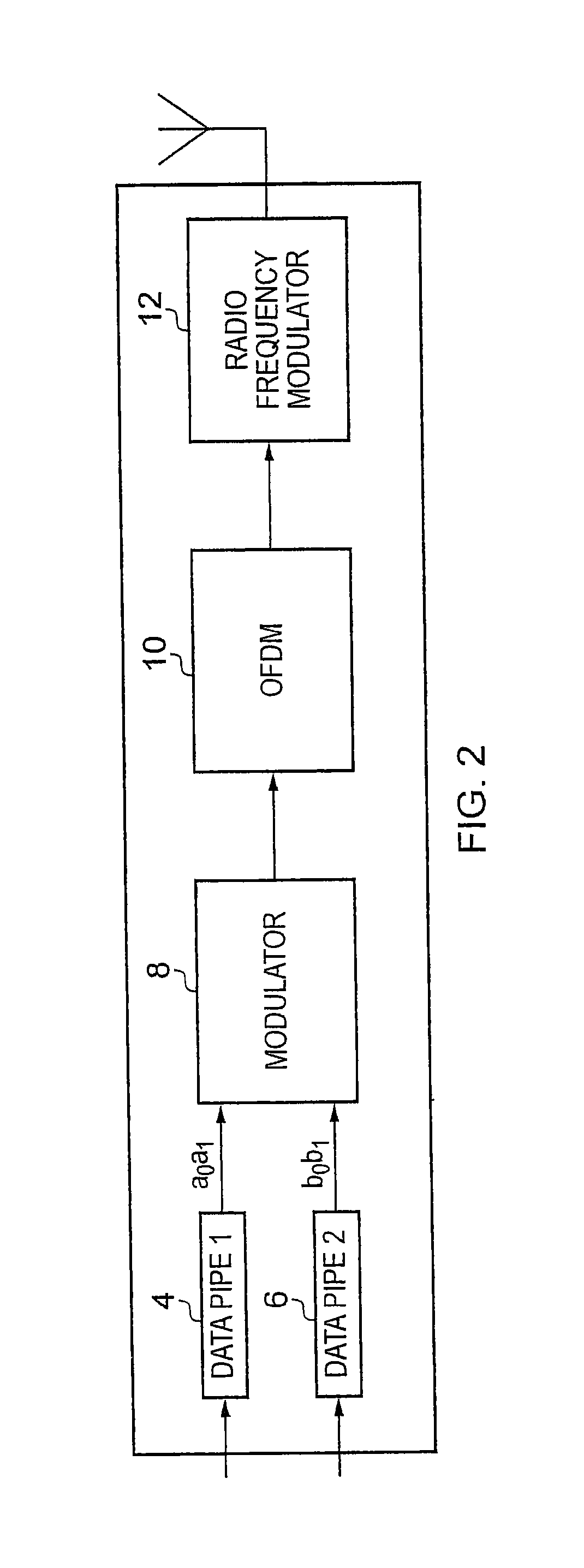Receiver and receiving method for hierarchical modulation in single frequency networks
a single frequency network and hierarchical modulation technology, applied in the direction of pulse manipulation, pulse technique, amplitude demodulation, etc., can solve the problems of disadvantage and technical problems of single frequency network
- Summary
- Abstract
- Description
- Claims
- Application Information
AI Technical Summary
Benefits of technology
Problems solved by technology
Method used
Image
Examples
first example
OFDM Detector
[0130]As explained above, according to the present technique the OFDM detector 150 shown in FIG. 22 is arranged to detect both the national signal S(z) and the local service signals D(z) using the pilot signals transmitted with both the national and local signals and the additional pilots transmitted with the local signal. Two example implementations of the OFDM detector 150 will now be described, with reference to FIGS. 24 to 29.
[0131]FIG. 24a provides a representation of a schematic block diagram of a first example of the OFDM detector 150 shown in FIG. 22. This can be used for a SISO, MISO or MIMO scheme. In FIG. 24 a Fast Fourier Transform FFT block 290 converts the received signal from a time domain into the frequency domain. A national broadcast signal equaliser 292 then receives the frequency domain OFDM symbols and forms an estimate of the combined local service insertion channel and the national broadcast channel as well as the received national broadcast data....
second example
Of the OFDM Detector
[0136]As will be appreciated by those familiar with equalisation techniques, the implementation of the single frequency network equaliser 292 and the local insertion equaliser 320 include a divider circuits 300, 338. Each of the divider circuits in the respective equalisers 292, 320 cancel the effect of the respective channels by division. For example in the single frequency equaliser 300, the channel H(z) is cancelled from the component of the signal which includes the data for the national signal S(z) by dividing in the frequency domain the national broadcast sign S(z) multiplied with the channel (convolved with the channel in the time domain) by the estimate of the channel H′(z) in order to recover the national broadcast signal. However a multi-path fading radio channel can produce nulls in the frequency response as a result of the multiple paths interfering destructively to cancel each other, thereby producing a zero component. As a result, a simple division ...
PUM
 Login to View More
Login to View More Abstract
Description
Claims
Application Information
 Login to View More
Login to View More - R&D
- Intellectual Property
- Life Sciences
- Materials
- Tech Scout
- Unparalleled Data Quality
- Higher Quality Content
- 60% Fewer Hallucinations
Browse by: Latest US Patents, China's latest patents, Technical Efficacy Thesaurus, Application Domain, Technology Topic, Popular Technical Reports.
© 2025 PatSnap. All rights reserved.Legal|Privacy policy|Modern Slavery Act Transparency Statement|Sitemap|About US| Contact US: help@patsnap.com



